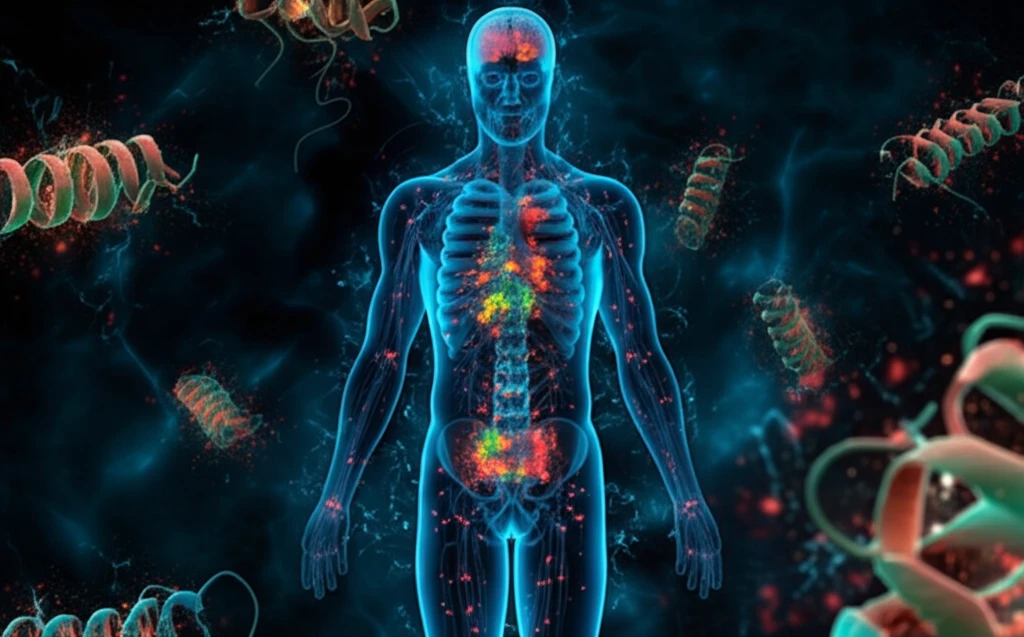
Revolutionizing Cancer Imaging: How a Novel Protein Could Unlock New Treatment Strategies
"A breakthrough in positron emission tomography (PET) imaging offers new hope for personalized cancer therapy by targeting Programmed Death Ligand-1 (PD-L1)"
In the ever-evolving landscape of cancer treatment, immunotherapy has emerged as a beacon of hope, harnessing the body's own defenses to combat tumors. Central to this approach is understanding the intricate interactions between cancer cells and the immune system, particularly the role of immune checkpoints. These checkpoints, such as Programmed Death Ligand-1 (PD-L1), act as brakes on immune cells, preventing them from attacking cancer cells. However, predicting which patients will respond to therapies targeting these checkpoints remains a significant challenge.
Current methods rely heavily on analyzing biopsied tumor tissue, a process that, while informative, has limitations. Biopsies only capture a snapshot of a tumor's characteristics at a specific location and time, potentially missing the broader picture. Factors like tumor heterogeneity (variations within the tumor itself) and changes in biomarker expression due to prior treatments can lead to inconsistent results. Furthermore, obtaining adequate tissue samples, especially in patients with metastatic disease, can be difficult.
To overcome these limitations, researchers are turning to innovative imaging techniques that can non-invasively visualize PD-L1 expression throughout the body. Among these, positron emission tomography (PET) imaging holds great promise, offering a way to repeatedly assess PD-L1 levels, track changes over time, and improve lesion detection and characterization. The development of a novel engineered small protein for PET imaging of human PD-L1 represents a significant step forward in this field.
What Makes this Novel Protein So Promising for Cancer Imaging?

The newly engineered protein, known as FN3hPD-L1, is designed to bind specifically to PD-L1, allowing it to be visualized using PET scans. This protein is based on a fibronectin type-3 domain (FN3) scaffold, a small and stable structure that offers several advantages over traditional antibody-based imaging agents. Notably, FN3hPD-L1 is significantly smaller than a typical antibody (approximately one-tenth the size), enabling it to clear from the body more quickly and potentially provide clearer images.
- Protein Engineering: FN3hPD-L1 was engineered using a human fibronectin type-3 domain (FN3) scaffold.
- Affinity Testing: The binder's affinity was assayed in CT26 mouse colon carcinoma cells stably expressing hPD-L1 (CT26/hPD-L1).
- Radiolabeling: The protein was labeled with copper-64 (64Cu), a radioactive isotope suitable for PET imaging.
- In Vivo Imaging: The radiolabeled protein was injected into mice bearing different types of tumors, and PET scans were performed to assess its ability to target PD-L1.
- Immunohistochemistry: The protein's ability to detect PD-L1 in human cancer tissue samples was compared to that of validated PD-L1 antibodies.
Why This Matters: The Potential Impact on Cancer Treatment
The development of FN3hPD-L1 holds significant implications for the future of cancer treatment. By providing a non-invasive and repeatable way to assess PD-L1 expression, this novel protein could help clinicians identify patients who are most likely to benefit from immunotherapy. This personalized approach could lead to more effective treatment strategies, improved patient outcomes, and reduced healthcare costs. Further research and clinical trials are needed to fully realize the potential of FN3hPD-L1, but this innovative imaging agent represents a major step forward in the fight against cancer.
